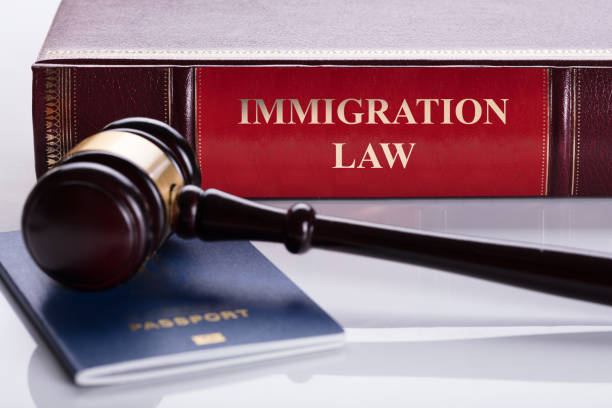A humanitarian visa Australia is a type of visa that government grants to individuals who are in need of protection. This is due to their individual circumstances and because they are unable to return to their home country. The government usually grants this type of visa to refugees or people in need of asylum. Moreover, this visa provides them with the opportunity to live and work in Australia on a permanent basis.
Australia’s Refugee and Humanitarian programme offer a variety of visa options for both offshore and onshore applicants. Generally, applicants must demonstrate that they meet Australia’s protection obligations in order to obtain this visa. However, these requirements follow strict guidelines and will typically follow a complex application process. Read on to know more about a humanitarian visa Australia.
What Is Australia’s Refugee and Humanitarian Program?
This program is an Australian government-run initiative that provides a pathway for refugees or people in need of protection to resettle in Australia. The program operates under the Migration Act 1958. The Department of Home Affairs (DHA) manages the program. As mentioned, the program has two main streams:
1. Offshore Humanitarian Program
This program is for individuals who are outside Australia seeking resettlement. Additionally, this program operates through a network of offices and partner companies in countries around the world. People may file their humanitarian visas for resettlement through these channels. An individual who is granted settlement can receive support and assistance in Australia including access to:
- Housing
- Healthcare
- Employment services
2. Onshore Protection Program
This program is for individuals who are already in Australia seeking protection due to persecution, conflict, or other human rights abuses in their home country. Individuals that arrive by means of planes or boats can apply for protection visas under this program. The programme allows people in need of protection to live and work in Australia permanently.
The goal of these programs is to provide protection and support to people who are in need. It also promotes regional and international cooperation on refugee protection and resettlement. The program operates in accordance with Australia’s international obligations. This includes the 1951 United Nations Convention Relating to the Status of Refugees.
Note: Applicants may get a temporary protection visa (Subclass 785) if they did not arrive lawfully.
Humanitarian Visa Australia: Visas for Overseas Applicants
1. Refugee Visa (Subclass 200)
This visa is for individuals who the government recognise as refugees and who are in need of resettlement. The Subclass 200 visa is granted under the Offshore Humanitarian Program. Individuals with this visa can live and work in Australia on a permanent basis and have access to a range of support services to help them settle and rebuild their lives.
2. In-Country Special Humanitarian Visa (Subclass 201)
This example of a humanitarian visa Australia is for people who need protection but do not meet the criteria for a refugee visa. It allows them to remain in Australia as a permanent resident and access various support services and benefits. In order to be eligible for this visa, individuals must meet specific requirements related to their:
- Personal circumstances;
- Background; and
- Protection needs

3. Global Special Humanitarian Visa (Subclass 202)
This humanitarian visa Australia is for people who need protection. An eligible Australian citizen, permanent resident, or eligible organisation sponsors this visa. The visa is for individuals who face substantial discrimination amounting to gross violations of human rights in their home country and who have no adequate protection. To be eligible for this visa, applicants must meet certain criteria related to their:
- Personal circumstances
- Background
- Protection needs; and
- Sponsorship
4. Emergency Rescue Visa (Subclass 203)
The government issues this humanitarian visa Australia to individuals who urgently need to resettle in Australia due to emergency or disaster situations in their home country. This visa allows them to resettle in Australia as a permanent resident.
However an eligible Australian citizen, permanent resident, or eligible organisation must also sponsor them. This visa provides a humanitarian response to people in imminent danger who have no option but to be rescued and resettled in Australia.
5. Woman at Risk Visa (Subclass 204)
This humanitarian visa Australia is specifically issued to women who are at risk of significant harm. A common example of significant harm is domestic violence or harassment in their home country.
This visa allows them to be sponsored by an eligible Australian citizen, permanent resident, or eligible organisation and resettles in Australia as a permanent resident. Additionally, the visa is designed to protect and support women who have no adequate protection in their home country.
Humanitarian Visa Australia: Compelling Reasons
The criteria for the above-mentioned visas vary depending on the circumstance of a visa applicant. Hence, applicants must provide ‘compelling reasons’ if they want their visa to be approved.
The Department of Immigration and Border Protection considers the four following factors when granting a humanitarian visa. These are:
- The degree of discrimination or persecution in the applicant’s home country.
- The extent of the applicant’s connection to Australia.
- Whether there are any other suitable countries that the applicant may apply to for settlement and protection.
- The capacity of the Australian community to provide settlement for humanitarian visa applicants.
Note: Some of these visas requires a permanent resident or citizen of Australia to sponsor the applicant. All applicants must pass health and character checks in addition to meeting the basic eligibility criteria.
How Long Do These Visas Take to Process?
The majority of humanitarian visa Australia applicants may need immediate protection and settlement. However, under normal circumstances, these applicants must wait up to 12-18 months to process the necessary visa. These visas are also subject to certain process priorities. For example:
1. First priority is given to applicants who apply for a split family visa application. This means they are sponsored by an Australian permanent resident who holds a Refugee and Humanitarian Visa. They may also sponsor their partner and/or dependent children for a visa.
2. Applicants who receive sponsorship from “close family members or an immediate family member” are given second priority. However the sponsor must not hold a Protection Visa.
3. Humanitarian visa applicants who receive sponsorship from an “extended family member” receive third priority. The sponsor must not also hold a Protection Visa.
4. Applicants who receive sponsorship from a distant relative or friend receive fourth priority. The sponsor must not hold a Protection Visa.

Importance of Seeking Legal Advice
It is always important to seek legal advice when applying for a humanitarian visa in Australia. We at JB Solicitors understand that some applicants may need urgent protection and settlement.
Hence, our team of lawyers will aid in the application process and help with hassle-free approvals. We can also help in assessing what kind of visa applicants are eligible in applying for.
Contact us today for all your immigration law matters.
